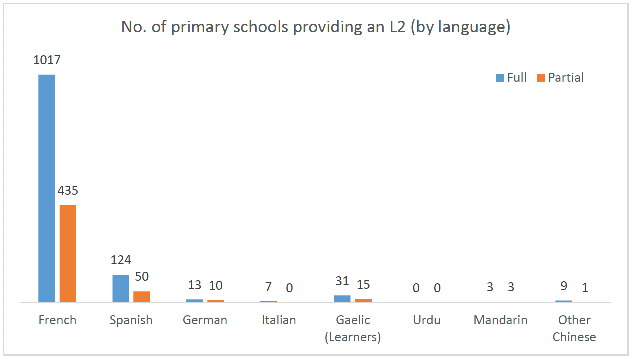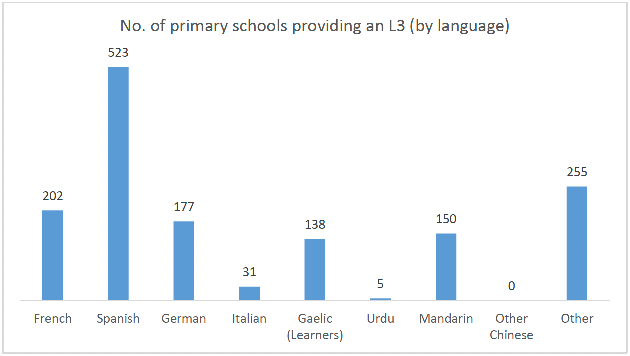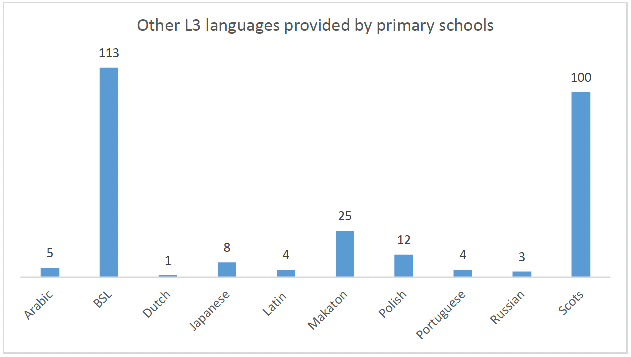1+2 languages policy - local authority survey 2021: findings
Findings of a 2021 survey of local authorities on progress to implement the 1+2 languages policy in schools. The key finding is that nearly all primary and secondary schools now deliver language learning from P1 through to the end of the Broad General Education.
3. Language learning in primary schools
3.1 L2 provision
We asked local authorities how many of their primary schools were providing an L2 entitlement. We defined this as follows:
- By full we mean an L2 is taught continuously from P1 to P7.
- By partial we mean an L2 is not taught continuously from P1 to P7.
- By none we mean an L2 is not taught at all from P1 to P7.
The responses received show that approx. 98% of primary schools were providing either a full or partial L2 entitlement during 2020-21. This breaks down as follows:
L2 entitlement %
Full - 69%
Partial - 29%
None - 2%
By comparison, the 2018-19 survey showed that approx. 88% of primary schools were providing a full entitlement. Given that the preceding survey did not ask if they provided a partial entitlement, the change in methodology means it is not easy to draw any conclusions about the trend in provision. While it appears that delivery of a full L2 entitlement has fallen from 88% to 69%, it is possible that some of those reporting a full entitlement in 2018-19 would have responded differently if the option of choosing a partial entitlement had been available.
The most taught L2 language continued to be French, being provided by approx. 86% of primary schools that provided an entitlement (88% in 2018-19).

N.b. This data contains multiple counting of some schools, e.g. a school may offer both French and Spanish as L2 languages. Out of 1,722 schools.
Spanish and Gaelic (Learners) remained the second and third most taught languages, being provided by 10% and 3% of schools respectively (10% and 3% in 2018-19). German was taught by 1.4% of schools (2% in 2018-19), while the other languages were each taught by less than 1% of schools respectively.
3.2 L3 provision
We asked local authorities how many of their primary schools were providing an L3 entitlement. We defined this as follows:
- That, in addition to the L2, one or more languages are taught as a planned part of the curriculum in P5, in P6 and in P7.
The responses received show that approx. 64% of primary schools were providing an L3 entitlement during 2020-21 (48% in 2018-19).
L3 entitlement %
Yes - 64%
No - 36%
The most taught L3 language continued to be Spanish, being taught by 48% of primary schools that provided an entitlement.

N.b. This data may contain multiple counting of some schools, e.g. a school may offer both French and Spanish as L3 languages for different year groups. Out of 1,722 schools
The uptake in 'Other' languages being taught as an L3 has increased, with this being driven by growth in both BSL and Scots (32 and 59 schools respectively in 2018-19).

N.b. Out of 255 schools
Contact
Email: ceu@gov.scot
There is a problem
Thanks for your feedback